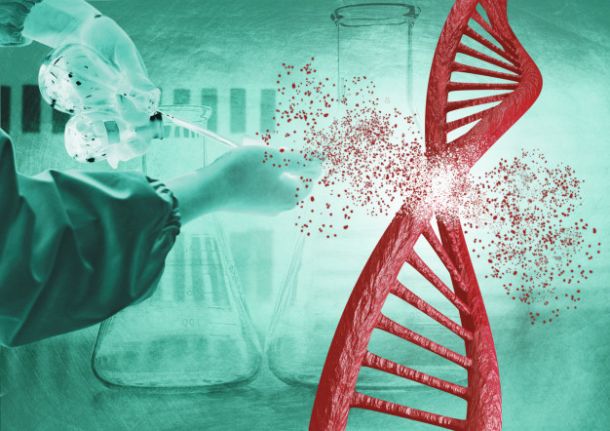INCONCRETO NEWS
From Hippocrates to Cell and Gene Therapy – Part 1
Did you know that more than 3,500 years ago Egyptians invented aspirin? Though Hippocrates (born 460 BC) is widely credited as being the father of modern medicine. The field of medicine has progressed substantially throughout history, both traditional and modern. Today, there are nearly 400 cell and gene therapies (CGT) in development for a variety of diseases and conditions. Cell and gene therapies are beginning to deliver on their promise, providing not only treatments for previously incurable diseases, but also, in some cases, providing actual cures.
Let’s start with two notions of medicine:
- Modern medicine, in which medical doctors and other healthcare professionals treat symptoms and diseases using drugs (medication), radiation, or surgery.
- Traditional medicine refers to health practices, approaches, or beliefs incorporating plant, animal and mineral-based medicines, spiritual therapies, manual techniques, and exercises, applied singularly or in combination to treat, diagnose and prevent illnesses or maintain well-being.
On April 16, 1999, a short article appeared in The Wall Street Journal entitled “New Era of Personalized Medicine: Targeting Drugs for Each Unique Genetic Profile,” and here, the public was introduced to the term “personalized medicine” for the first time. A consortium was then established as a collaboration between 10 major pharmaceutical companies, including Roche, Novartis, Glaxo Wellcome PLC, and several academic research institutions in the U.S. and U.K.
The goal was to provide a public resource on SNPs (the most common type of genetic variation among people) in the human genome. The consortium launched a two-year, $45 million program to identify several hundred thousand chemical signposts that would help gene hunters explore the vast regions of human DNA. They expected to create a map of genetic landmarks that would become a potent new tool for uncovering the minute inborn differences that make some individuals particularly susceptible to certain diseases.
Since then, advances in scientific knowledge have led to a new and exciting era of medicine for patients. More recently, scientists published the first complete, gapless sequence of a human genome – beginning a new wave of knowledge, developing new drugs target, and understanding the genetic basis of disease – two decades after the Human Genome Project produced the first draft human genome sequence.
Specifically, gene therapy uses genetic material, or DNA, to manipulate a patient’s cells for the treatment of an inherited or acquired disease. While cell therapy is the infusion or transplantation of whole cells into a patient for the treatment of an inherited or acquired disease.
“These concepts are no longer the stuff of science fiction, but rather, real-life science where cells and tissues can be engineered to grow healthy, functional organs to replace diseased ones; where new genes can be introduced into the body to combat disease; and where adult stem cells can generate replacements for cells that are lost to injury or illness”
— Scott Gottlieb, Physician who served as commissioner of the U.S. Food and Drug Administration

Precision medicine offers opportunities for biotech companies
The past 20 years have seen a transformation in the field of precision medicine. Today’s modernized clinical trials take advantage of a massive amount of molecular data that was not previously available. For biotech companies, innovative opportunities abound in this new environment – for new drug targets, newly designed drugs, new technologies for drug delivery, and engineered cell or gene therapies. Biotech companies often can be agile and flexible, at times giving them an advantage over their large-pharma counterparts. Indeed, the most critical and innovative new therapies for rare and untreated diseases are in the biotech pipeline.
Biopharmaceuticals comprise about one-third of drugs currently in development and refer to pharmaceutical substances produced using living organisms, such as microorganisms and animal cells. These are medical drugs produced using biotechnology, especially genetic engineering or hybridoma technology, or via biopharmaceutical techniques such as recombinant human technology, gene transfer, and antibody production methods. These large and complex molecular drugs have a high-therapeutic value.
What can conventional early-stage biotech companies do to compete with commercial leaders who have more capital?
Data analytics and intelligent data applications have already led to a completely new and growing biotech sector. A cluster of firms began identifying patterns and links in vast amounts of data using artificial intelligence and powerful computers. Consequently, they generated viable drug targets and leads more rapidly than conventional methods.
Digital transformation for CGT is essential. And to achieve digital transformation, there is a need to do more than simply “lift and shift” the old IT infrastructure to the cloud. The discovery, communication, and work processes need to be redesigned. Digital transformation strategies and execution plans are essential for achieving this goal. This recent article shows “Five Digital Transformation Steps for Cell and Gene Therapies” https://www.technologynetworks.com/biopharma/articles/five-digital-transformation-steps-for-cell-and-gene-therapies
There are many opportunities for biotech companies to make use of precision medicines in their pursuit of innovative new treatments. INCONCRETO is an international consultancy that provides expertise in capital project optimization and oversees critical paths for biopharmaceutical project execution. The team combines technical expertise with large program execution practices, improving predictable outcomes and steering profitability on Capex/Opex project investments.
For further reading, you may consult these sources:
https://www.ncbi.nlm.nih.gov/pmc/articles/PMC3252219/
https://academic.oup.com/oncolo/article/4/5/426/6385982
http://phrma-docs.phrma.org/files/dmfile/MID_Cell_and_Gene_Therapy_2018_FINAL.pdf
https://phrma.org/-/media/Project/PhRMA/PhRMA-Org/PhRMA-Org/PDF/A-C/MID-cell-and-gene-therapy-2020.pdf
https://www.innoplexus.com/blog/leveraging-ai-for-drug-discovery-in-early-stage-biotech-companies/
Newsletter
© INCONCRETO. All rights reserved. Powered by AYM































